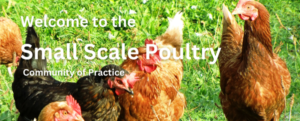Dr. Hao Van – RMIT University
RESEARCH SNAPSHOT
What?
We investigated if exposure of hens to an initial C. hepaticus infection could protect them from developing spotty livers following subsequent C. hepaticus challenges. We investigated immune responses in experimentally infected birds and looked at expression of some key genes that provide indicators of cytokine responses and gut integrity, to determine any role that they may play in arming hens to resist infection. We also studied immunological responses of a large number of birds from commercial flocks to further our understanding of the epidemiology of the disease.
Why?
Spotty Liver Disease (SLD) causes a serious risk to the egg production industry, reducing egg production and increasing flock mortalities. Currently, antibiotic therapy is the most effective way to control SLD, but antibiotic resistant field isolates of C. hepaticus have already been identified. Understanding the epidemiology of SLD and how birds respond to C. hepaticus infection is important in designing and applying appropriate biosecurity standards and for developing ways to control the disease.
What we found?
We found that following a first infection with C. hepaticus hens were subsequently protected when challenged a second or third time. After an initial infection, most of the hens did not develop any further liver lesions upon reinfection, although C. hepaticus still colonised. When the birds were infected a second time, 6 weeks after a first infection, antibody levels increased significantly. Seven weeks after a single infection, C. hepaticus was present in more than 90% of the bile samples of the birds. Gene expression studies indicated that C. hepaticus may alter cytokine expression.
A survey of the immune responses of C. hepaticus infected birds in commercial flocks revealed seroprevalence between 2-64% in farms with a history of SLD. In non-SLD farms, one farm had a seroprevalence of 41%. No correlation was observed between the flock size or flock age and ELISA or PCR outcomes, and no significant difference between the seroprevalence of anti-C. hepaticus antibodies among flocks with or without a known history of SLD was established. This result may indicate the importance of other predisposing factors in SLD development and/or raises the possibility that non-pathogenic strains of C. hepaticus, that can induce an immune response but not cause disease, may be present.
The study enhances our understanding of the immunological responses of birds infected with SLD. This information informs future directions of research in relation to improvements to current biosecurity measures, vaccine and feed additive development in order to control the spread of SLD in flocks. In particular, it indicates that it should be possible to develop a vaccine that could protect hens from the clinical outcomes of SLD.
For more information on this project please contact the principal investigator:
A/Prof. Hao Van
RMIT University
thithuhao.van@rmit.edu.au




